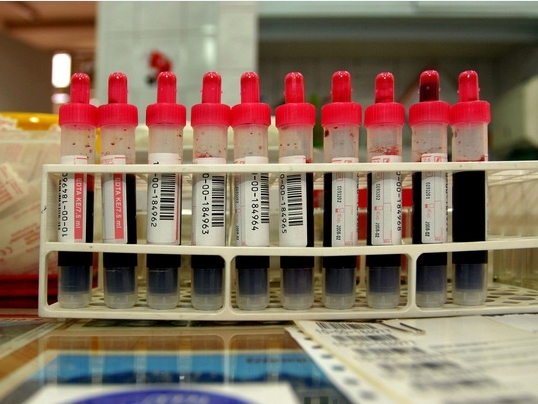

Some cases may be confused with dengue, according to a paper by Brazilian researchers published in the Journal of Clinical Virology (photo: FreeImage.com/ Billy W)
Some cases may be confused with dengue, according to a paper by Brazilian researchers published in the Journal of Clinical Virology.
Some cases may be confused with dengue, according to a paper by Brazilian researchers published in the Journal of Clinical Virology.

Some cases may be confused with dengue, according to a paper by Brazilian researchers published in the Journal of Clinical Virology (photo: FreeImage.com/ Billy W)
By Karina Toledo | Agência FAPESP – A study supported by FAPESP and coordinated by researchers at the São José do Rio Preto Medical School (FAMERP) in São Paulo State, Brazil, suggests official statistics may underestimate the size of the epidemic caused by Zika virus. Some cases of Zika may be misreported as dengue, the authors also argue.
The team, led by Maurício Lacerda Nogueira, a member of the Zika Research Network (Rede Zika), performed molecular tests on blood samples from 800 people treated as suspected dengue patients at the emergency facility of Hospital de Base, São José do Rio Preto’s reference hospital, between January and August 2016.
The material was supplied by Hospital de Base, which is also FAMERP’s teaching hospital, and by the city’s health department.
The initial diagnosis, based on clinical symptoms and serological tests, was confirmed in only 400 samples. More than 100 of the cases analyzed were positive for Zika virus, and the virus that causes chikungunya fever was identified in one of the samples.
None of the three arboviruses transmitted by Aedes aegypti was found in the remaining samples (almost 300). The researchers suspect these patients probably had flu or some other viral disease. Their findings were published this month in the Journal of Clinical Virology.
“These results suggest the classic division usually made between symptoms – associating conjunctivitis with Zika and joint pain with chikungunya, for example – is only for classroom use. In practice, the symptoms can’t be separated like that,” Nogueira said. “It’s also practically impossible to distinguish between the three arboviruses with the serological tests currently used on a routine basis by laboratories and emergency services.”
Although new serological methods capable of distinguishing accurately between Zika and dengue antibodies have been developed (read more at agencia.fapesp.br/23065), so far they are used only in academic research, he added.
The methodologies currently available to the public health system and private labs and hospitals may also produce false positives for dengue in patients with Zika, according to Nogueira, because the two viruses are so similar.
“The only way to be sure is to perform molecular tests such as real-time PCR, which costs much more than serology,” he said. “Public health labs like Adolfo Lutz Institute can’t offer the entire population such expensive tests and must prioritize pregnant women and people with suspected Guillain-Barré syndrome, a neurological complication associated with Zika virus infection.”
Implications
The World Health Organization (WHO) recommends that all cases with an uncertain diagnosis should be treated as dengue because the risk of death from dengue is higher than from Zika and chikungunya.
False-positive results for dengue do not jeopardize treatment of patients but generate unnecessary costs for the health service, according to Nogueira.
“Rest and oral rehydration at home is usually sufficient for people with Zika, except pregnant women,” he said. “A dengue patient, however, must return to the health service for intravenous rehydration and undergo more complex tests. In particular, platelet levels have to be monitored owing to the risk of hemorrhage.”
For Nogueira, false positives are, above all, a cause for concern because they create uncertainty about official epidemiological statistics.
“There was a record number of dengue cases in São Paulo State in 2015,” he said. According to the São Paulo State Department of Health, the number of dengue cases exceeded 650,000 last year. “How many of those were actually Zika cases, I wonder? Dengue epidemiological data in Brazil has been considered sound for 20 years, but in the past two years we’ve started questioning whether it’s reliable.”
Uncertainty about the statistics tends to undermine the effectiveness of public policy to prevent and treat diseases, Nogueira added, in addition to hindering studies of the cost effectiveness of dengue vaccines and (in the future) Zika vaccines.
“If the estimated number of cases is wrong, vaccine cost effectiveness estimates will also be wrong,” he said.
Microcephaly
In contrast with other states, especially Pernambuco, Bahia and Rio de Janeiro, the rise in the number of Zika cases in São Paulo has not been accompanied by an explosion in the number of babies born with microcephaly.
For Nogueira, the large number of neonatal complications in the Northeast and Rio de Janeiro could be due to environmental or genetic factors not found elsewhere.
“One hypothesis that has been advanced recently is that yellow fever vaccination could afford protection against microcephaly,” he said. “Yellow fever vaccination is part of the immunization program in the interior of São Paulo State, and a few years back there was a campaign on the coast.”
Republish
The Agency FAPESP licenses news via Creative Commons (CC-BY-NC-ND) so that they can be republished free of charge and in a simple way by other digital or printed vehicles. Agência FAPESP must be credited as the source of the content being republished and the name of the reporter (if any) must be attributed. Using the HMTL button below allows compliance with these rules, detailed in Digital Republishing Policy FAPESP.




